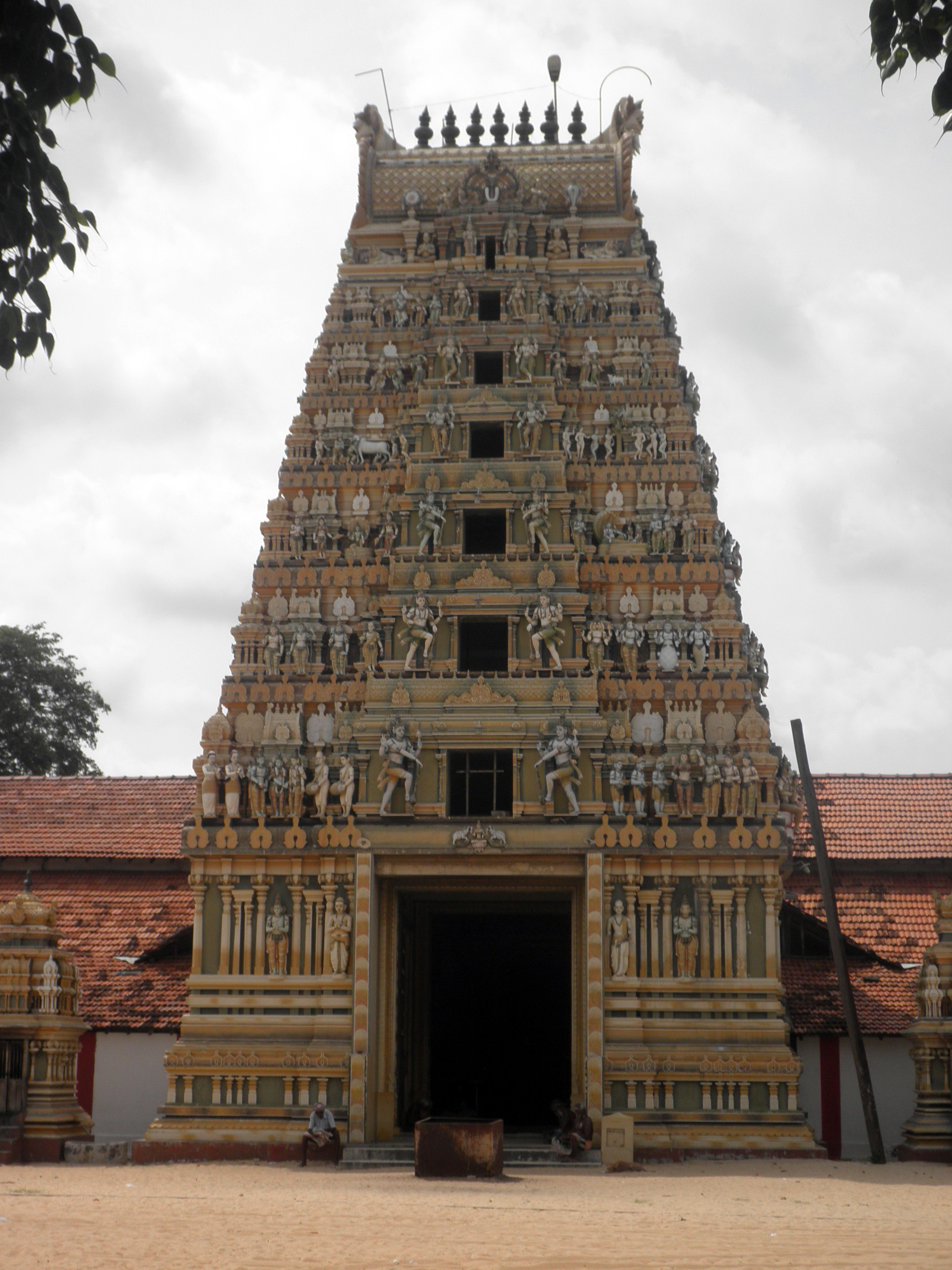Ketheeswaram Temple also Thirukeethiswaram is a Hindu temple which is located near the town of Mannar, Sri Lanka.It is dedicated to main deity in Saivism namely Lord Siva and is one of the five ancient Sivan temples around the island.
Overlooking the ancient period Tamil port towns of Manthai and Kudiramalai, the temple has lay in ruins, been restored, renovated and enlarged by various royals and devotees throughout its history. Tirukketisvaram is one of five Ishvarams dedicated to the Hindu deity Shiva and is venerated by Shaivas throughout the continent. Thiruketheeswaram along with Koneswaram are two of the nine most sacred sthalams of the Hindus.Tirukketisvaram is one of the 275 Paadal Petra Sthalams of Shiva glorified in the poems of the Tevaram.Literary and inscriptional evidence of the post classical period (300BC-1500AD) attests to the upkeep of the temple during the ancient period by kings of the Pallava, Pandyan Dynasty and Chola dynasties who contributed to its development up to the late 16th century.Another tradition holds that the Hindu planetary god Ketu worshipped Shiva at the shrine, thus creating the shrine's name "Ketheeswaram".
The temple (Ketheeswaram Temple) has been administered and frequented by Sri Lankan Hindu Tamils.
Ketisvaram Temple and the waters of the Palavi tank by its side are heralded in the Saiva work Tevaram in the 6th century CE by Campantar.
Tirukketisvaram is one of five Ishvarams dedicated to the Hindu deity Shiva and is venerated by Shaivas throughout the continent.
Tirukketisvaram is one of the 275 Paadal Petra Sthalams of Shiva glorified in the poems of the Tevaram.
Tirukketisvaram was largely destroyed by Portuguese colonials, with Pujas terminating at the shrine in 1589.
The existence of the Thiru-Ketheeswaram temple attests to the antiquity of the port.
Dathavamsa, (12th century) speaks of a Hindu temple at Mantotai in the reign of King Meghavannan (301-328).
The temple was mentioned in one of the Bhakti era Tevaram literature by two of the Nayanmars namely Sundarar and Sambanthar in South India indicating it's popularity even in India.
The reconstruction of the temple reminiscent of the glory of its original position was planned by the Restoration Society with the advice of savants and sthapatis learned in the art of temple construction, according to the shastras with the foundation for it laid on 28th November, 1953.
Do:
- Do pray your Ishta Devata before pilgrimage to Temple.
- Do contact Temple Devasthanam information centre for enquiry, temple information and for Pooja details etc.
- Do reserve your travel and accommodation at Temple well in advance.
- Do bath and wear clean clothes before you enter the temple.
- Do concentrate on God and Goddess inside the temple.
- Do maintain silence and recite Om Namahsivaya or your Istamantram to yourself inside the temple.
- Do observe ancient custom and traditions while in Temple.
- Do respect religious sentiments at Temple.
- Do deposit your offerings in the hundi only.
Dont's:
- Do not come to Temple for any purpose other than worshipping of God and Goddess.
- Do not smoke at Temple.
- Do not consume alcoholic drinks at Temple.
- Do not eat non-vegetarian food in the Kshetram.
- Do not approach mediators for quick Darshanam. It may cause inconvenient to others.
- Do not carry any weapon inside the temple.
- Do not wear any head guards like helmets, caps, turbans and hats inside the temple premises.
- Do not perform Sastanga Pranama inside the Sanctum Sanctorum.
- Do not take much time while performing Sparsa Darshanam to God in Garbhagriha.
- Do not buy spurious prasadams from street vendors.
- Do not encourage beggars at Temple.
- Do not spit or create nuisance in the premises of the temple.
